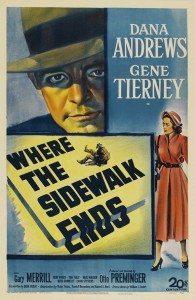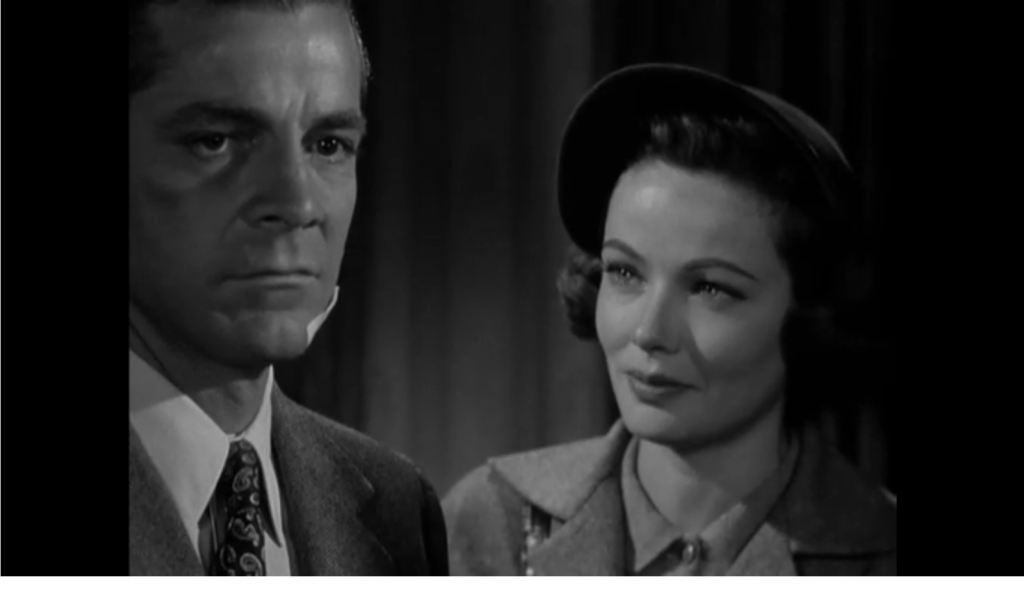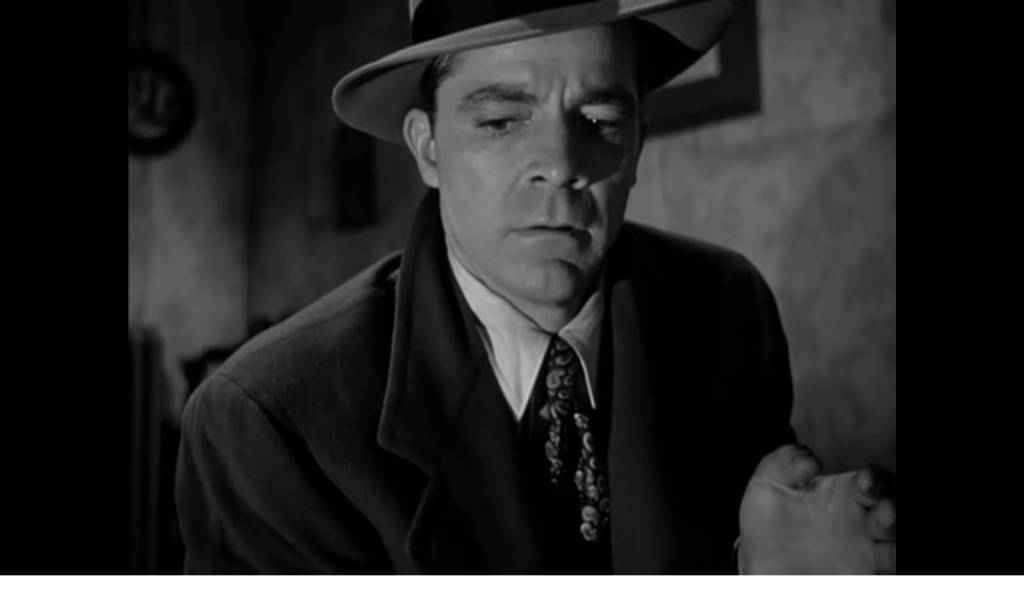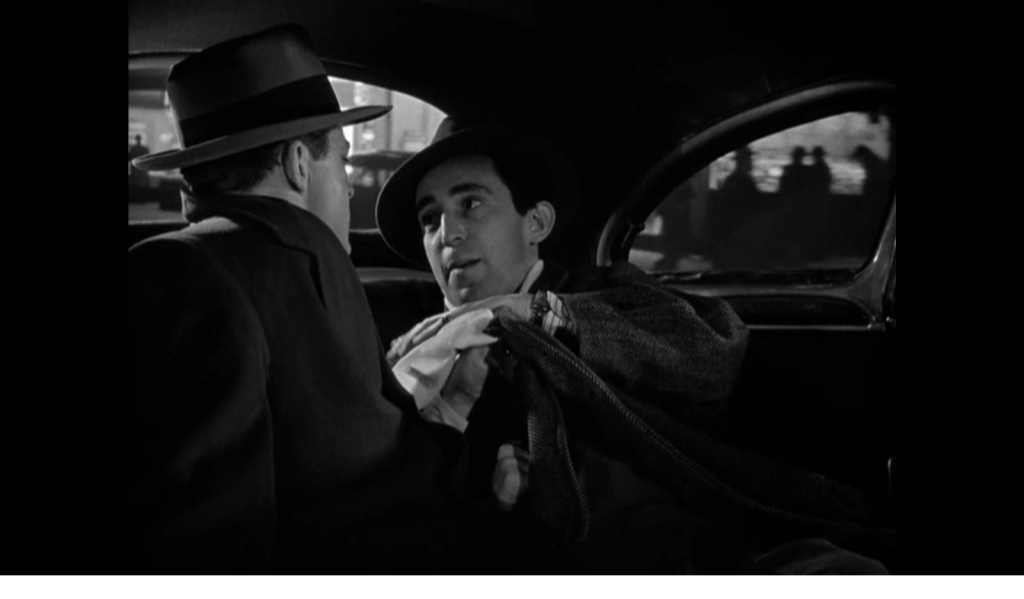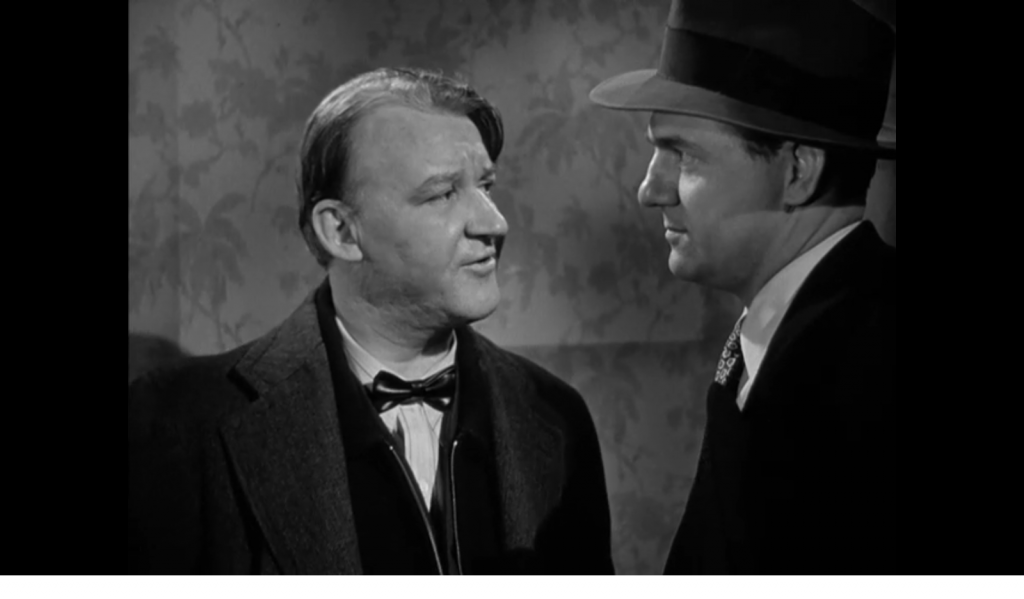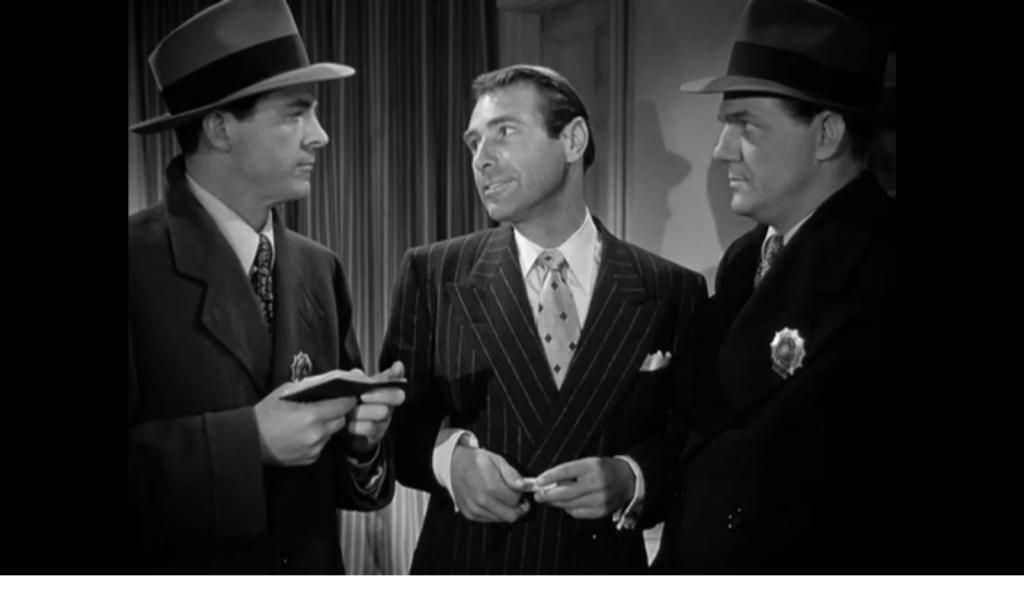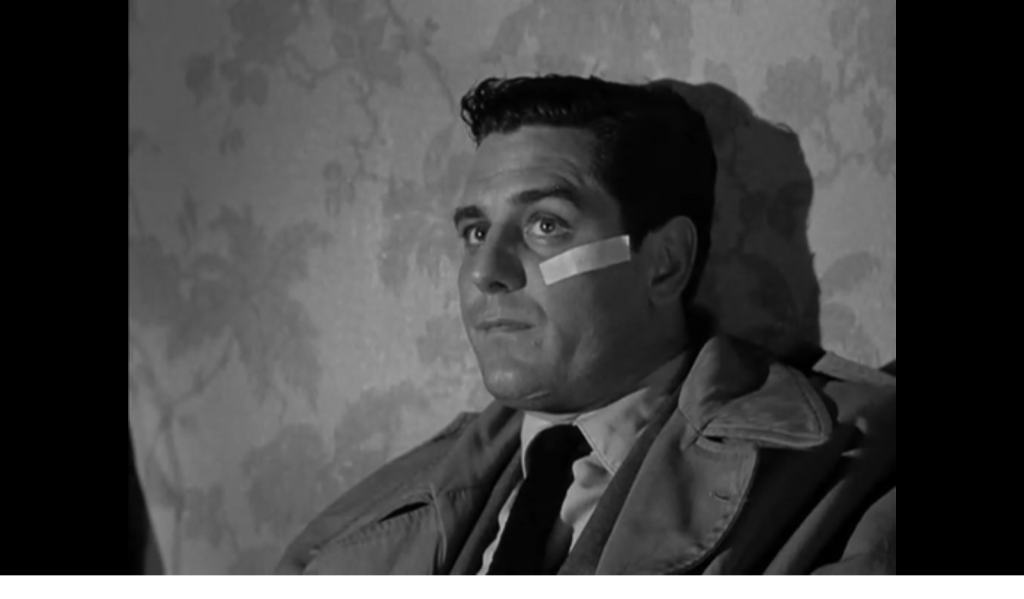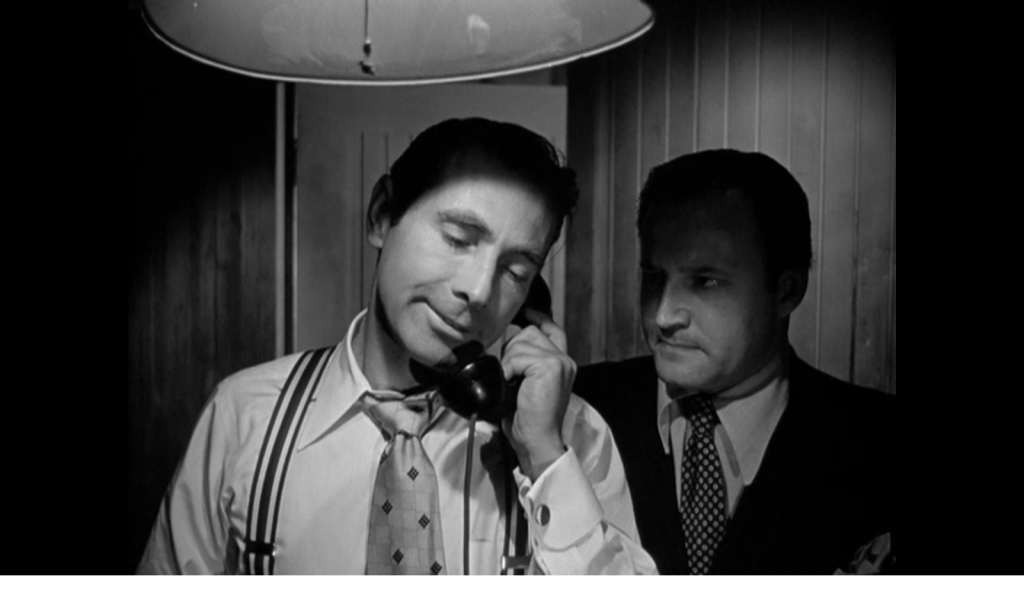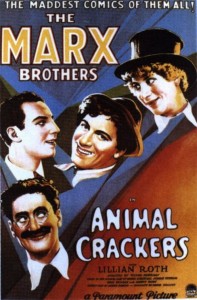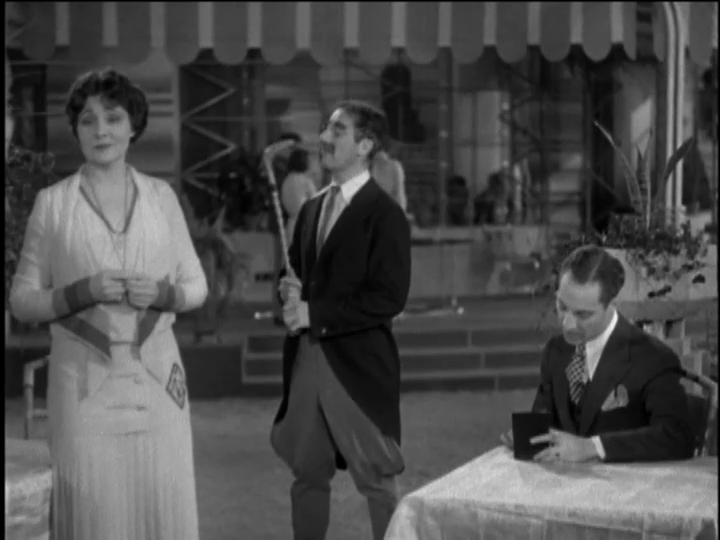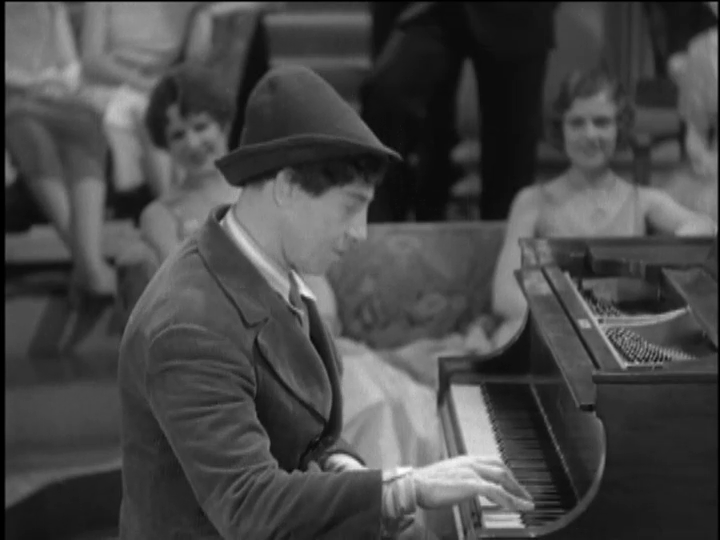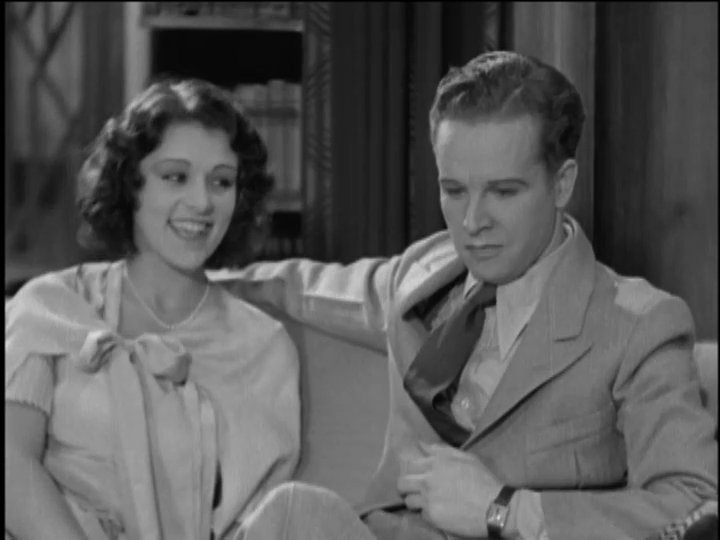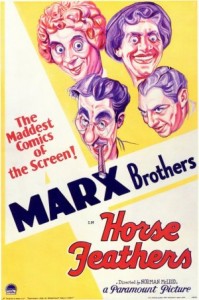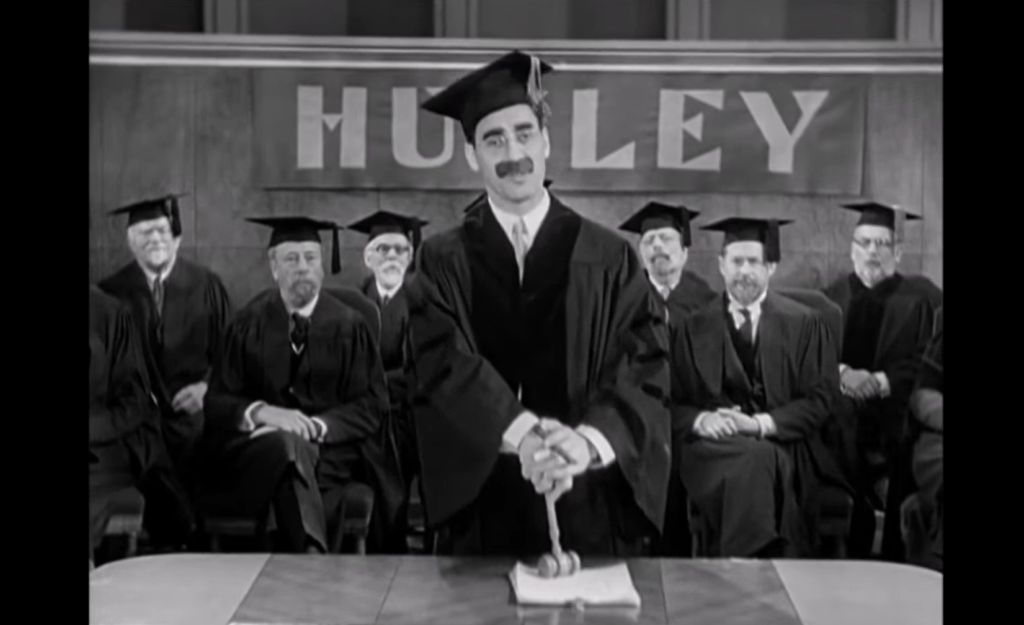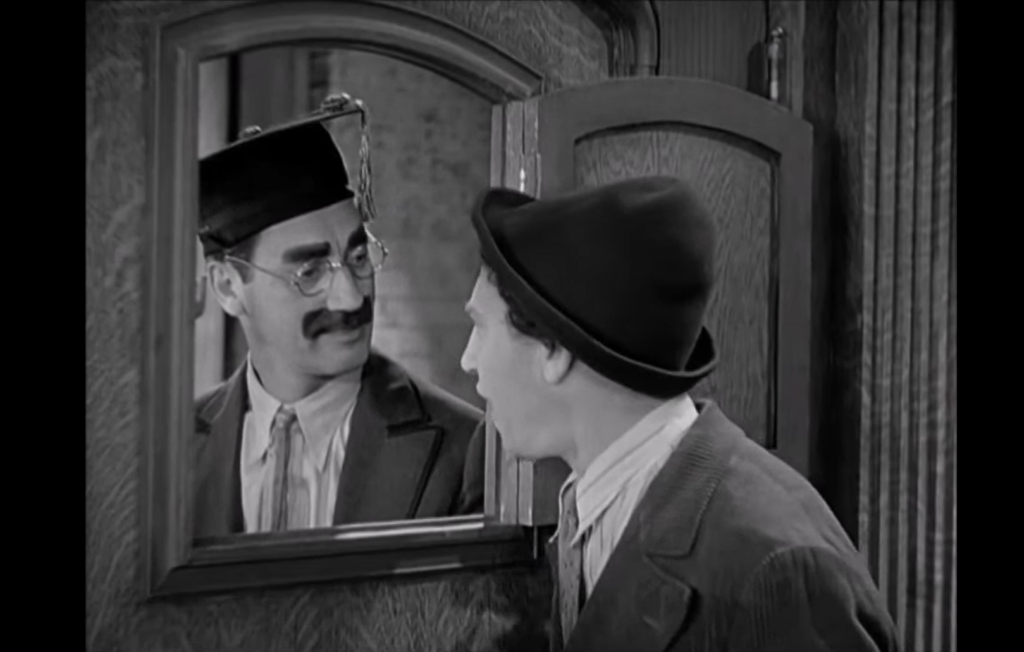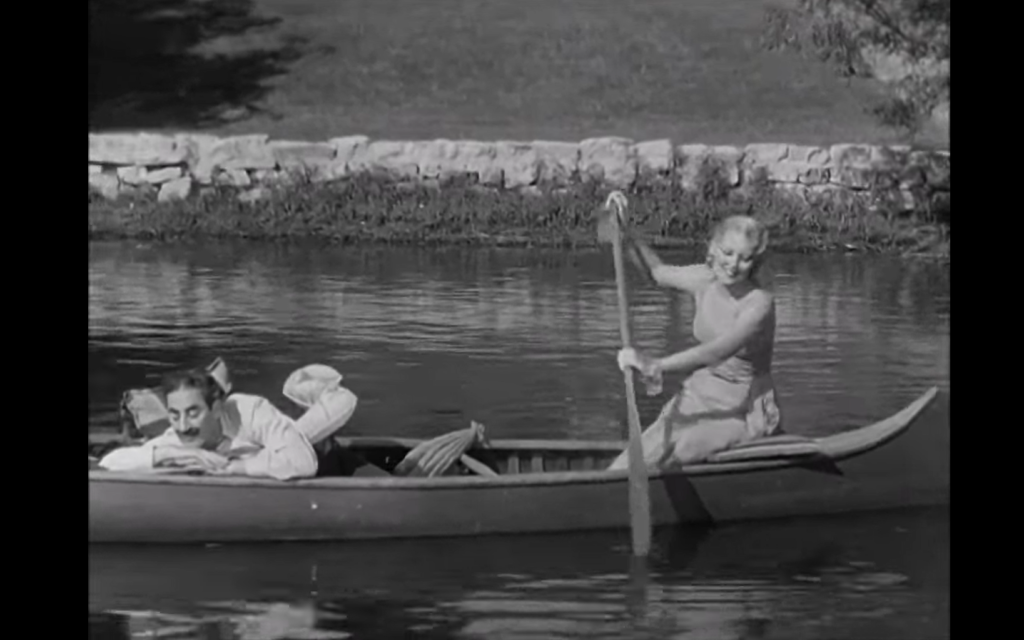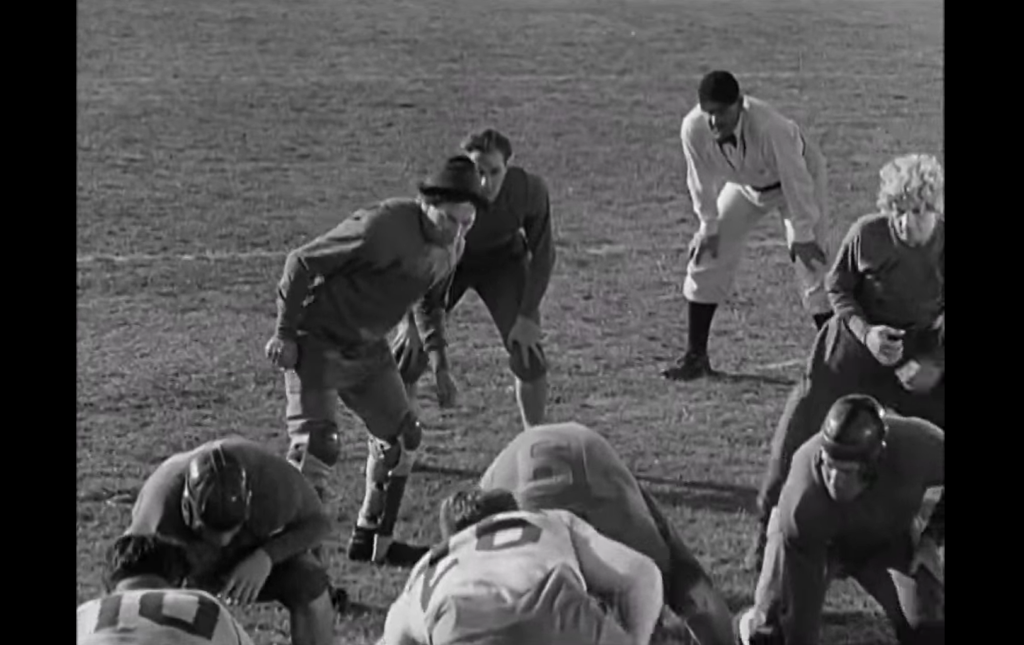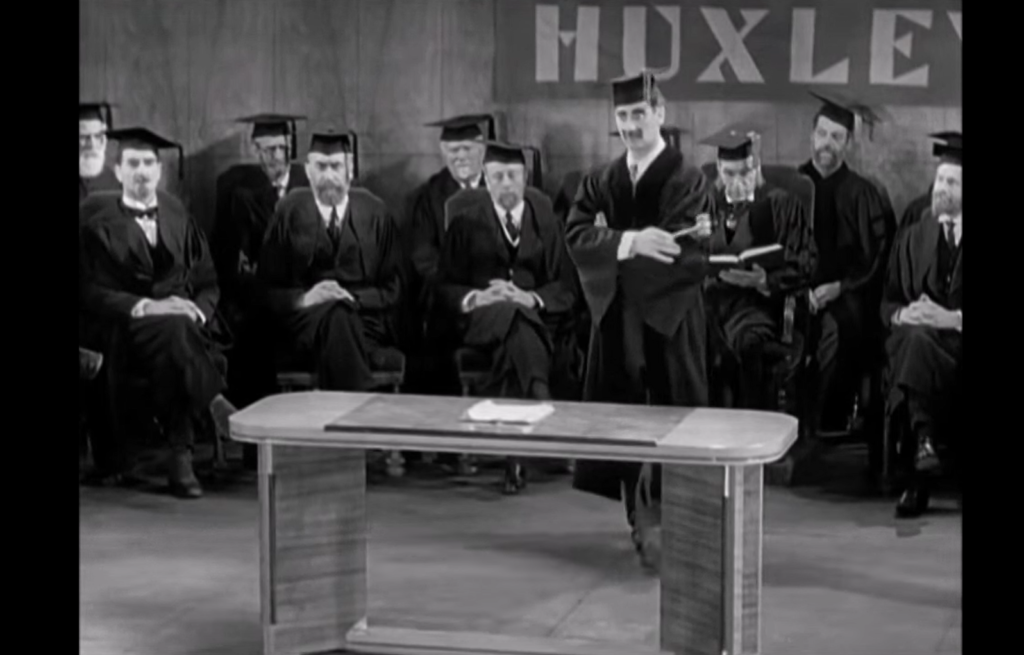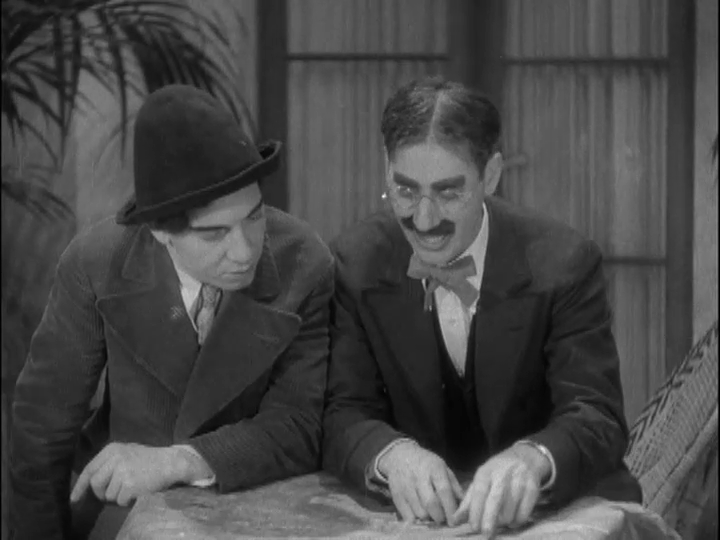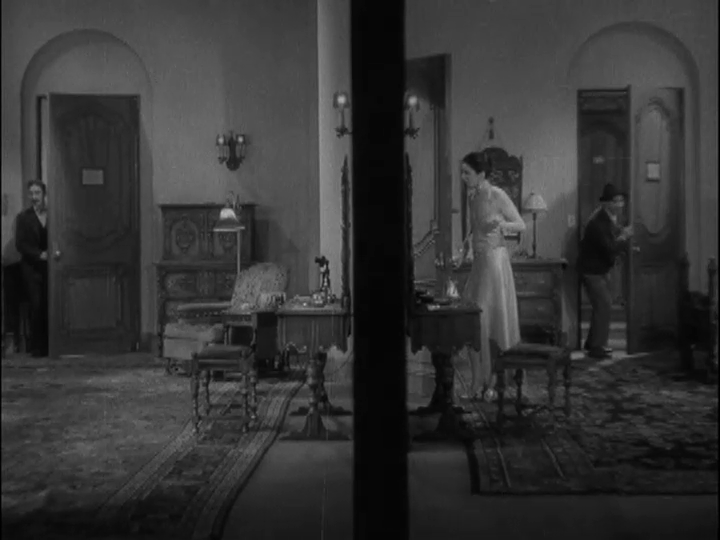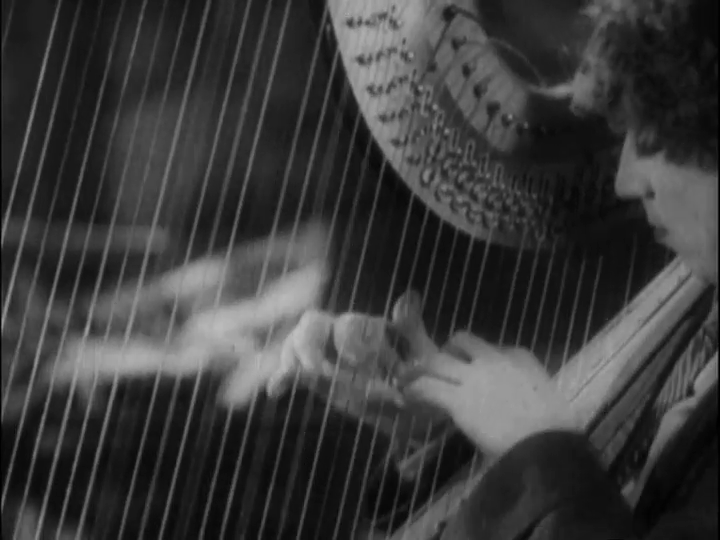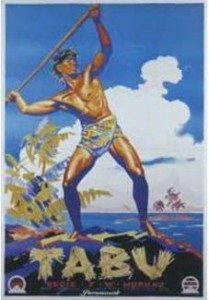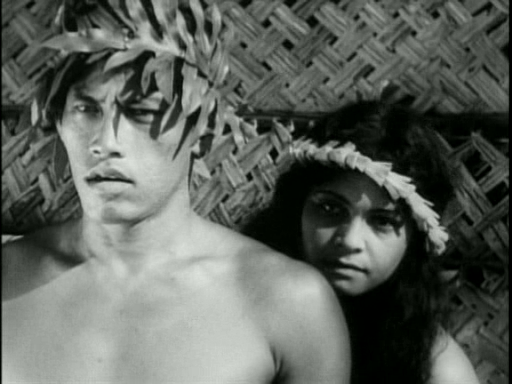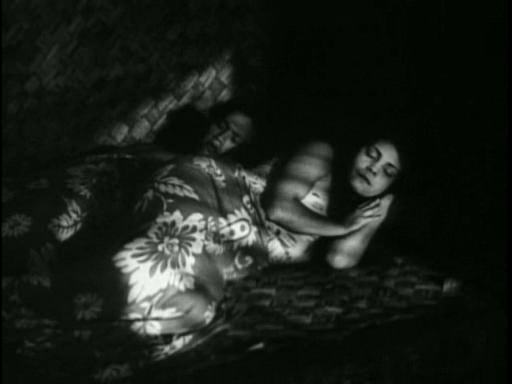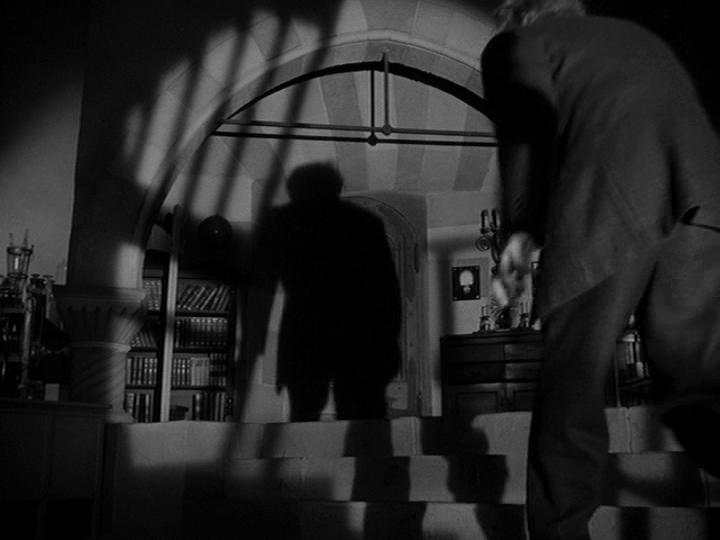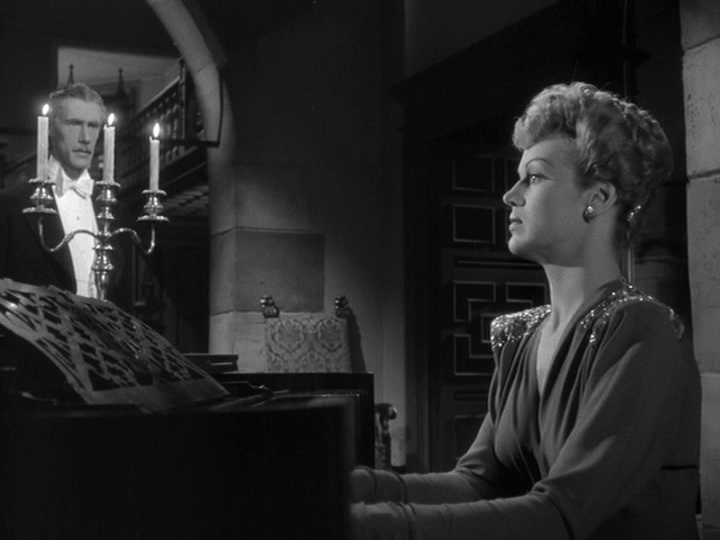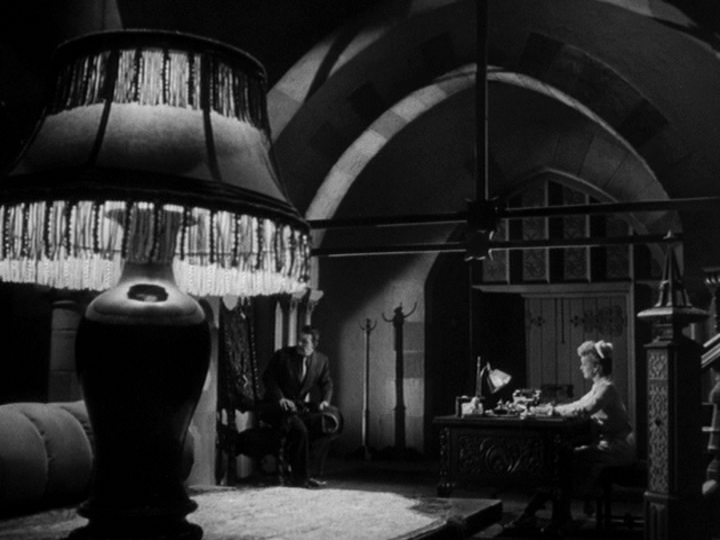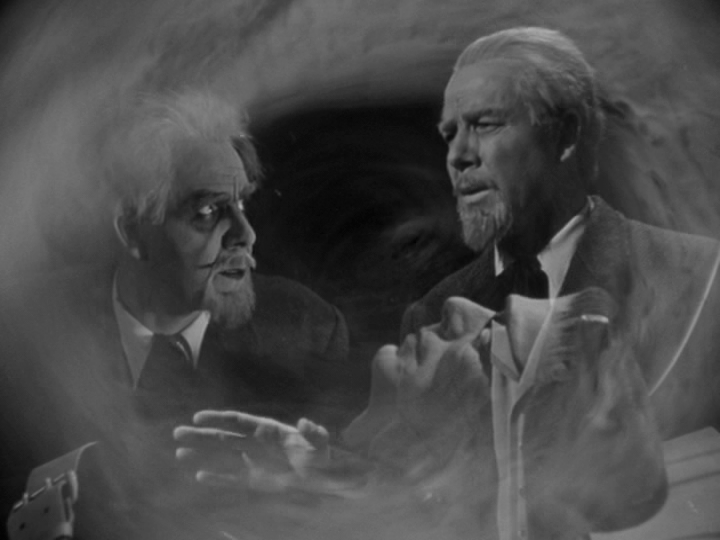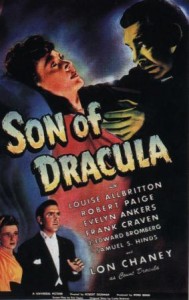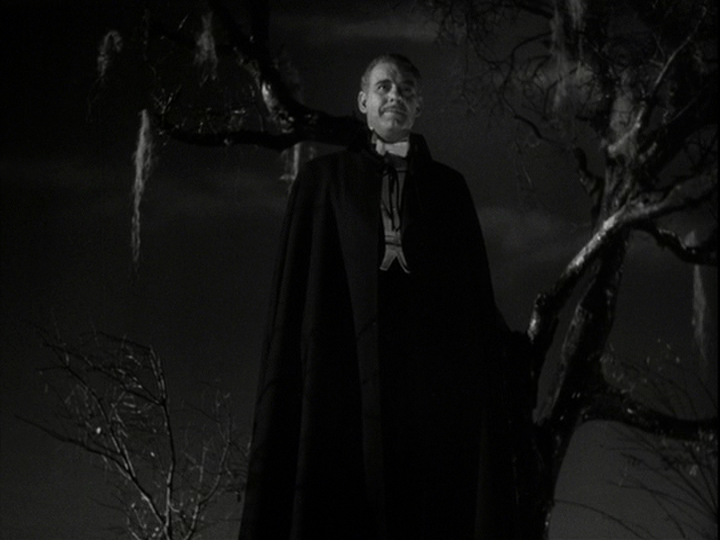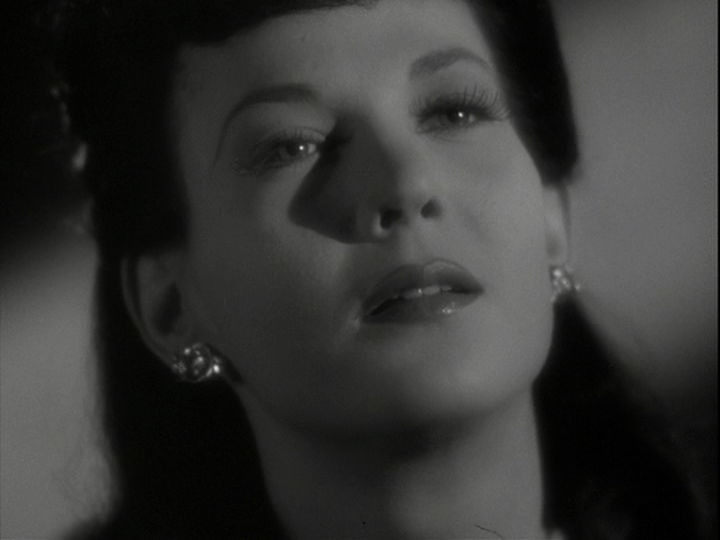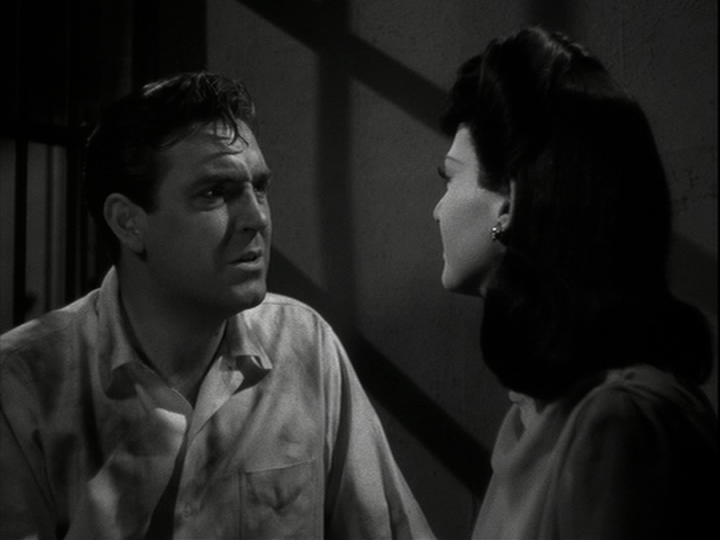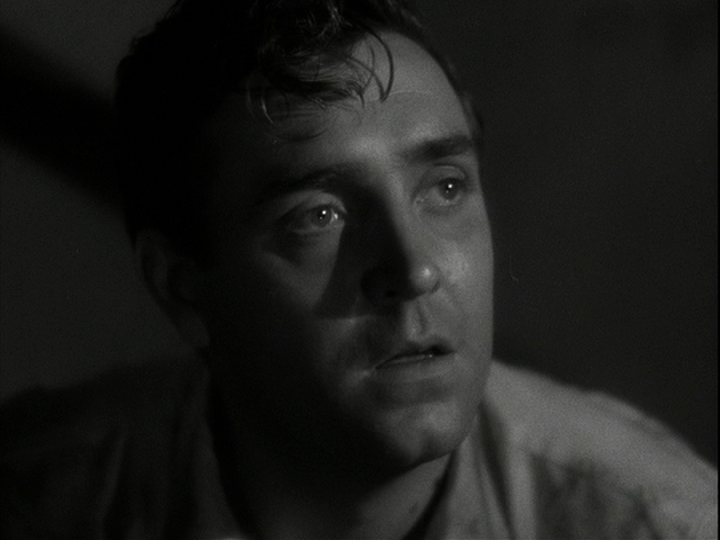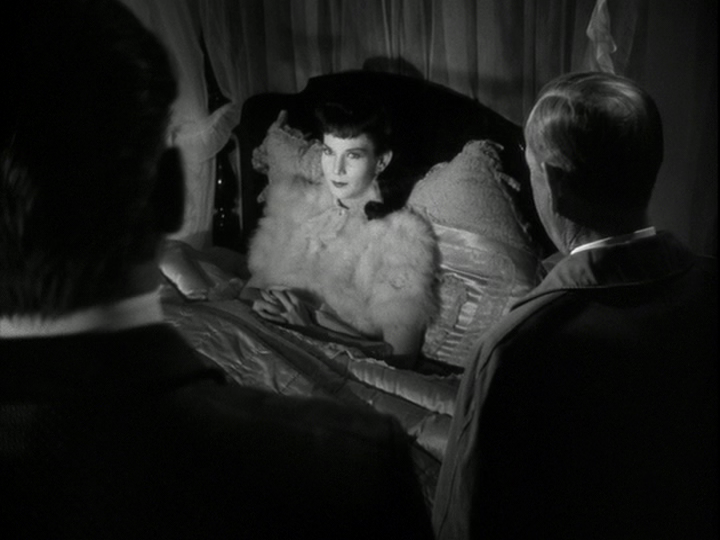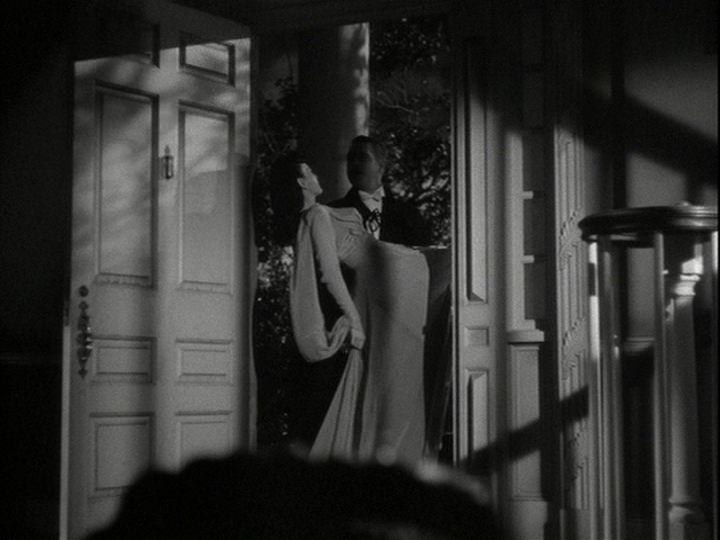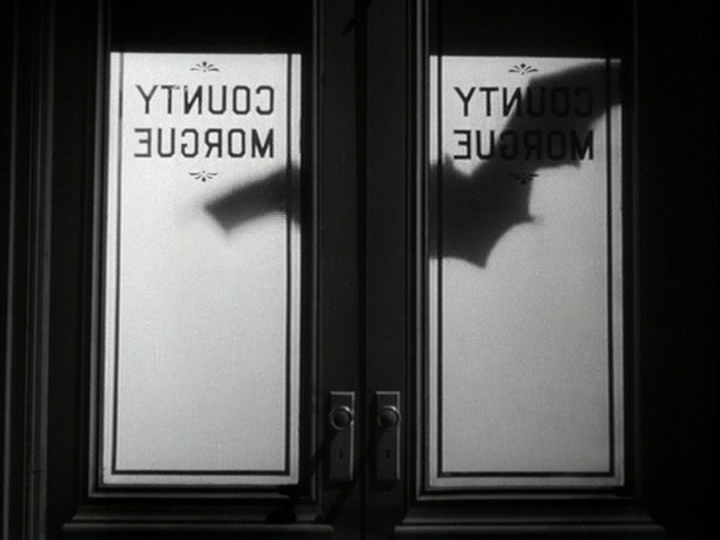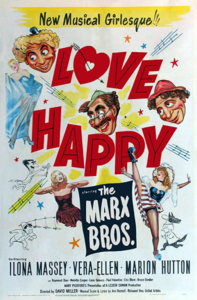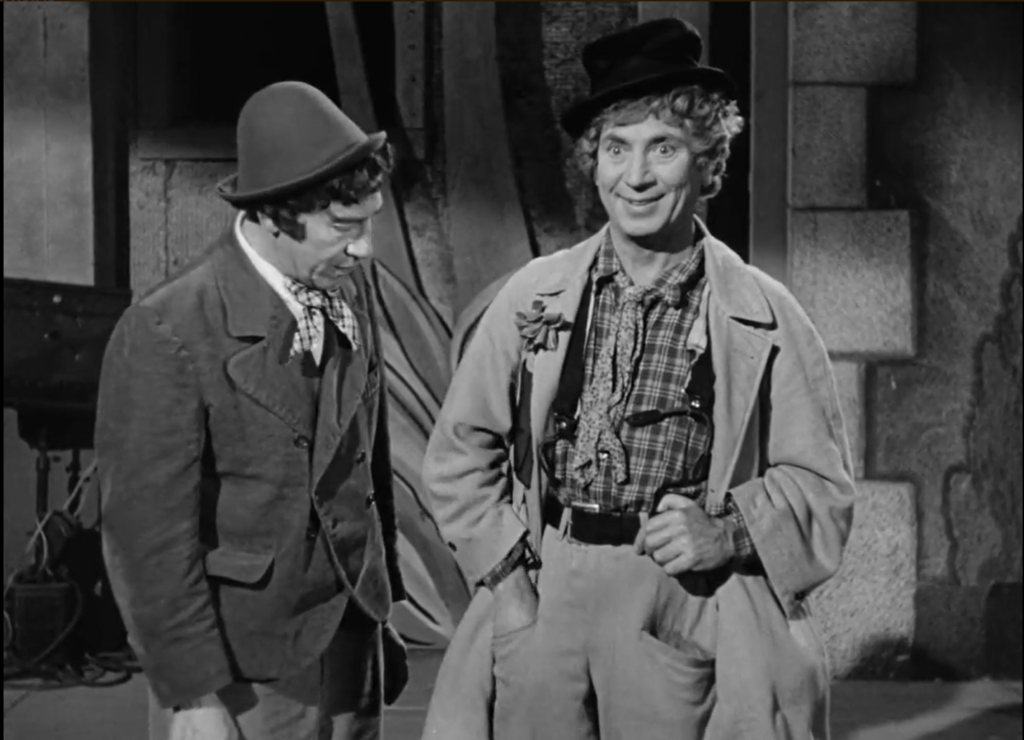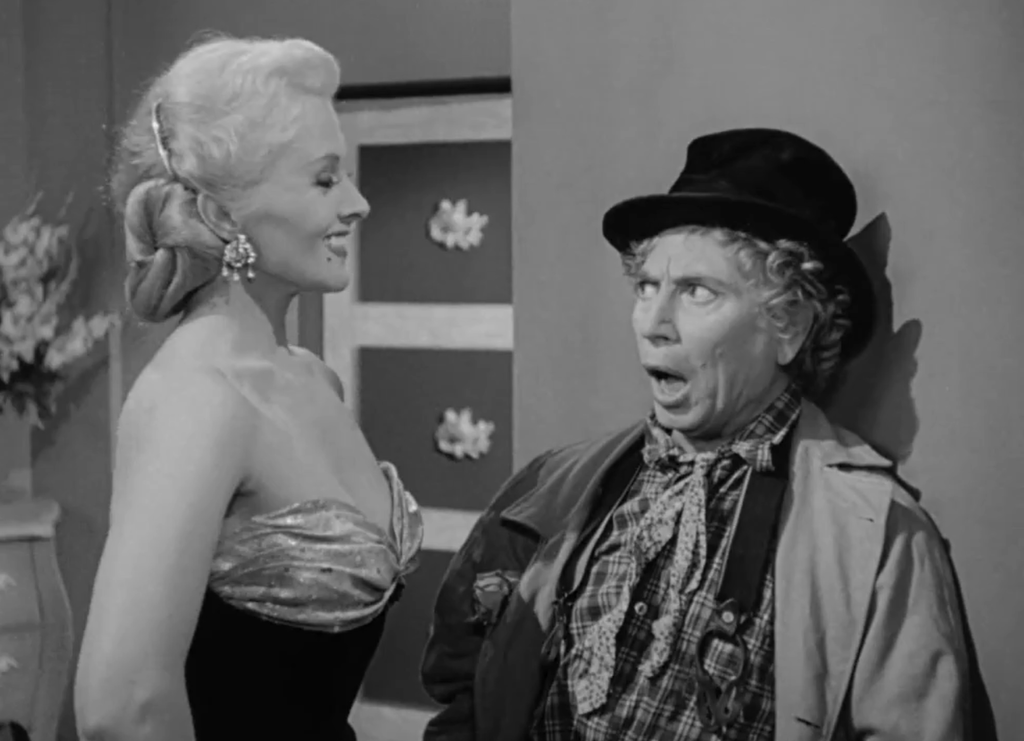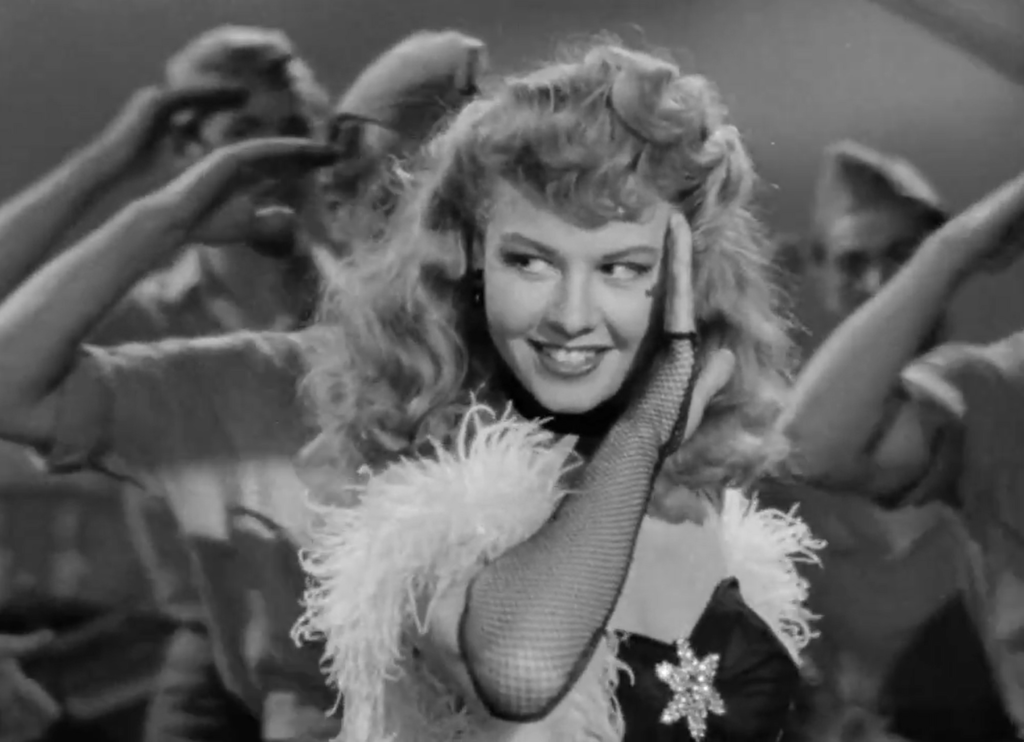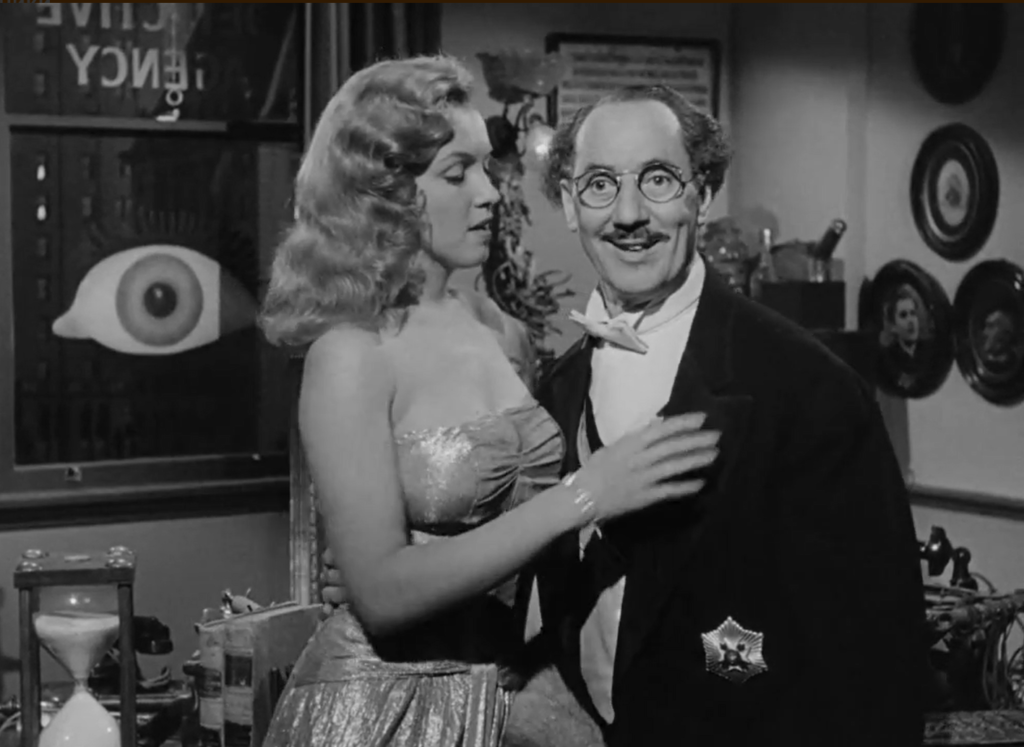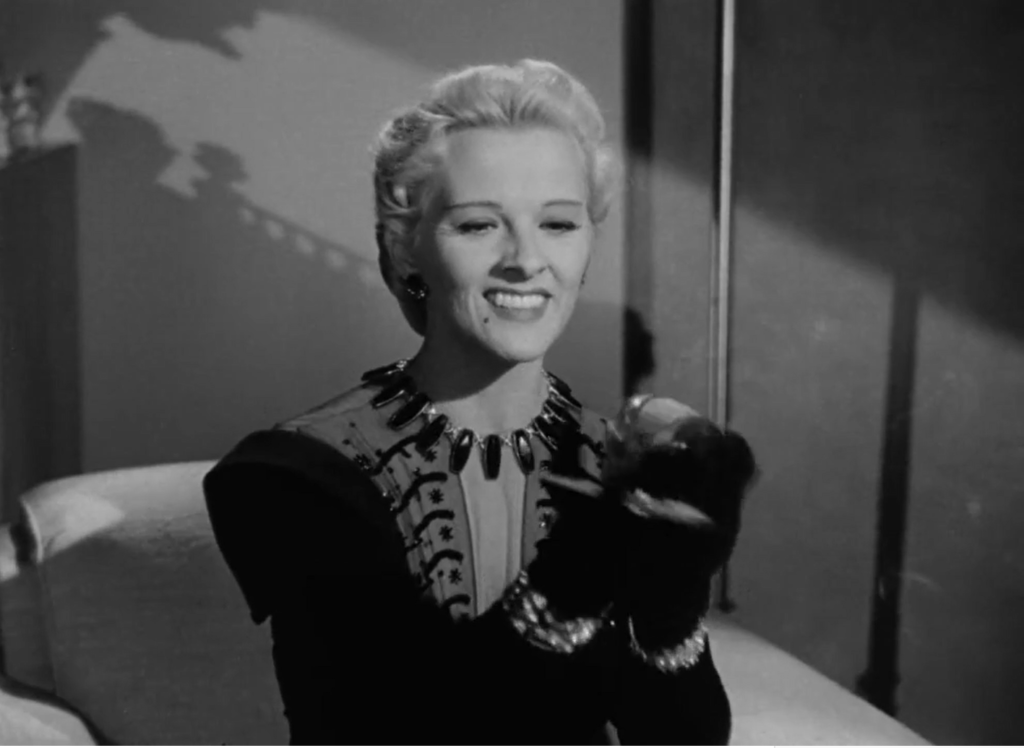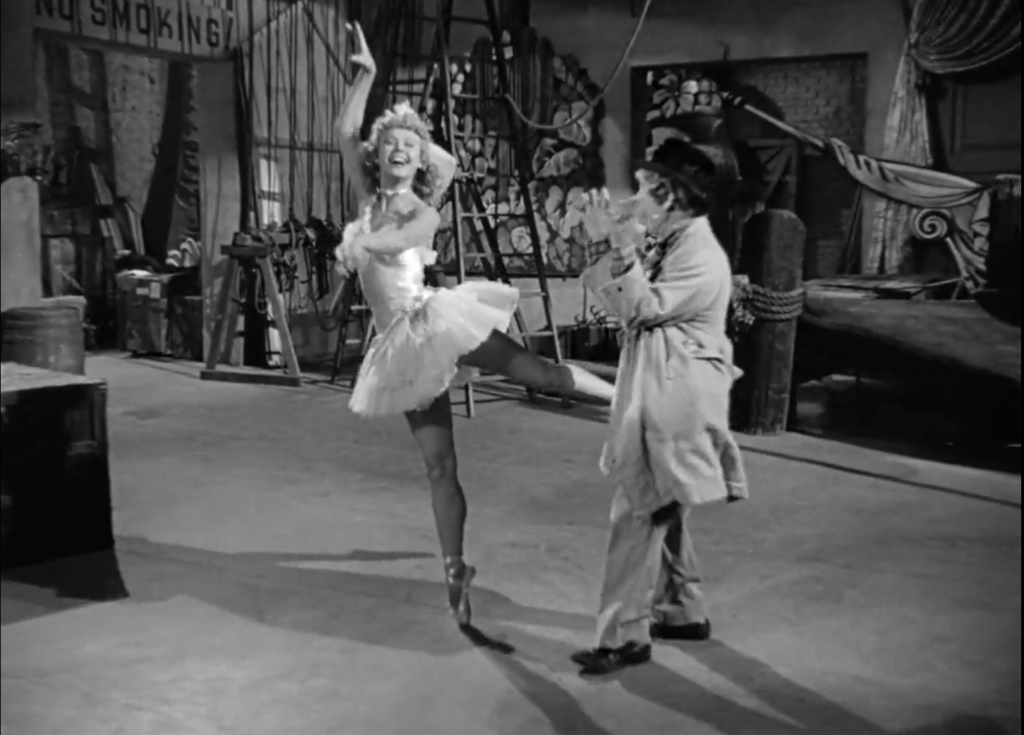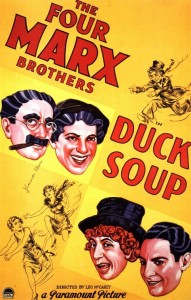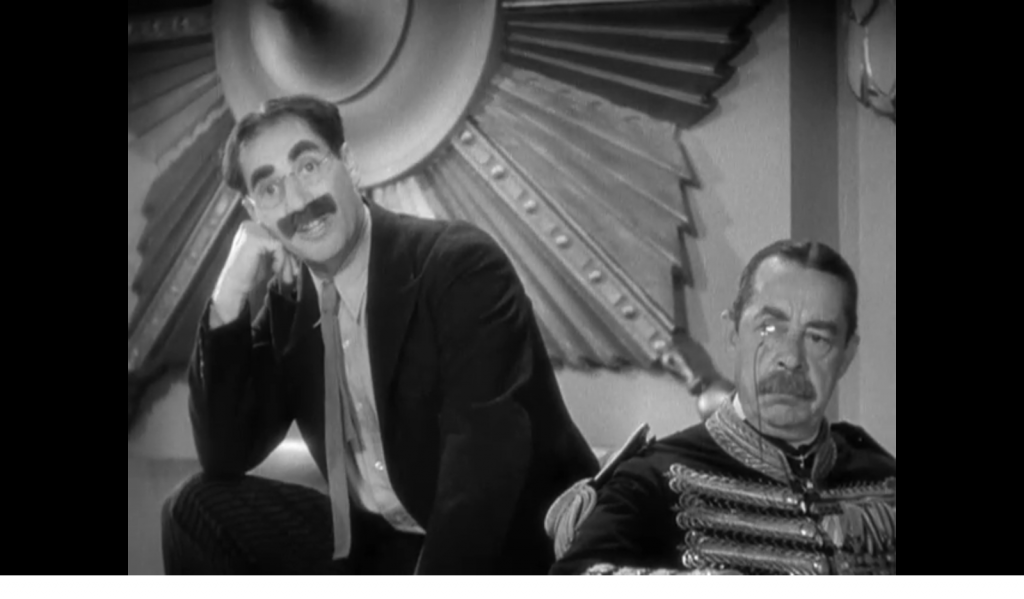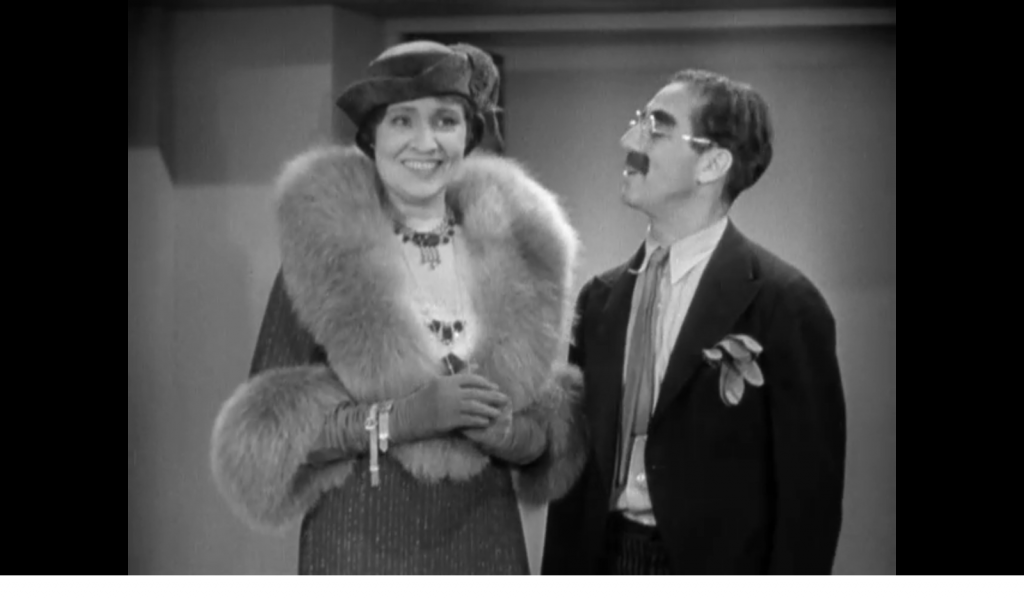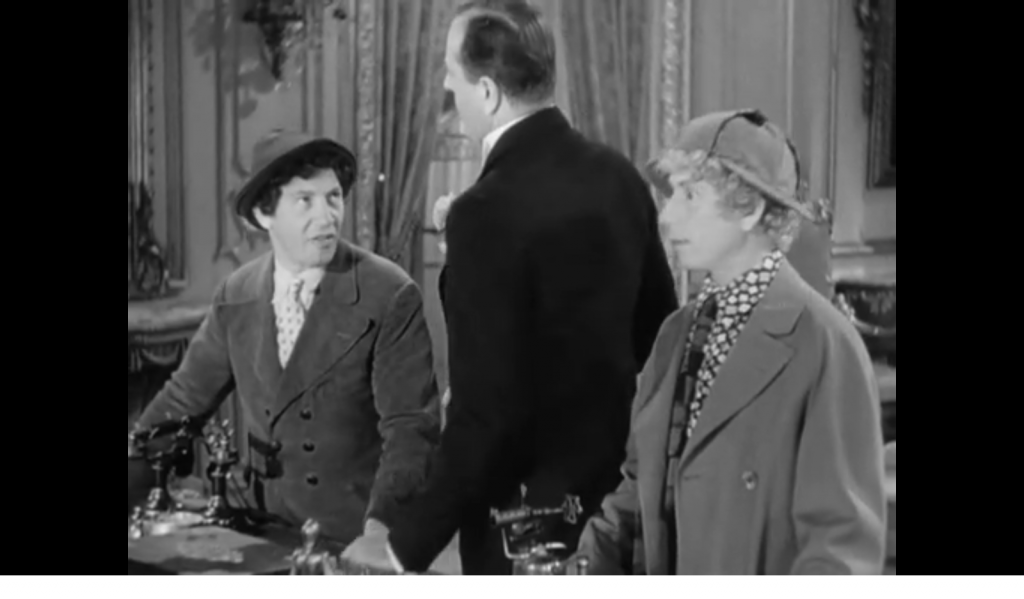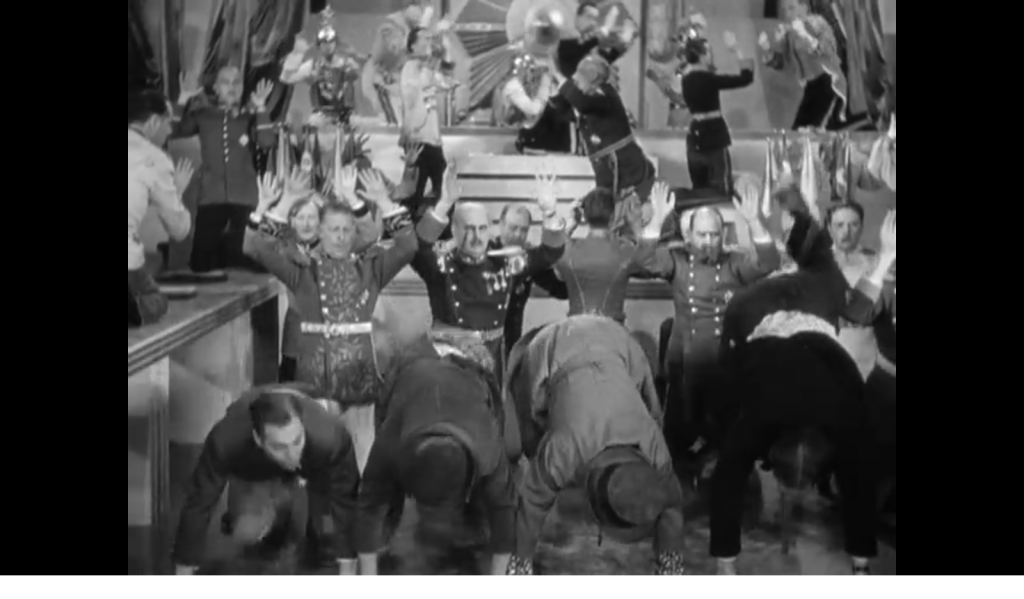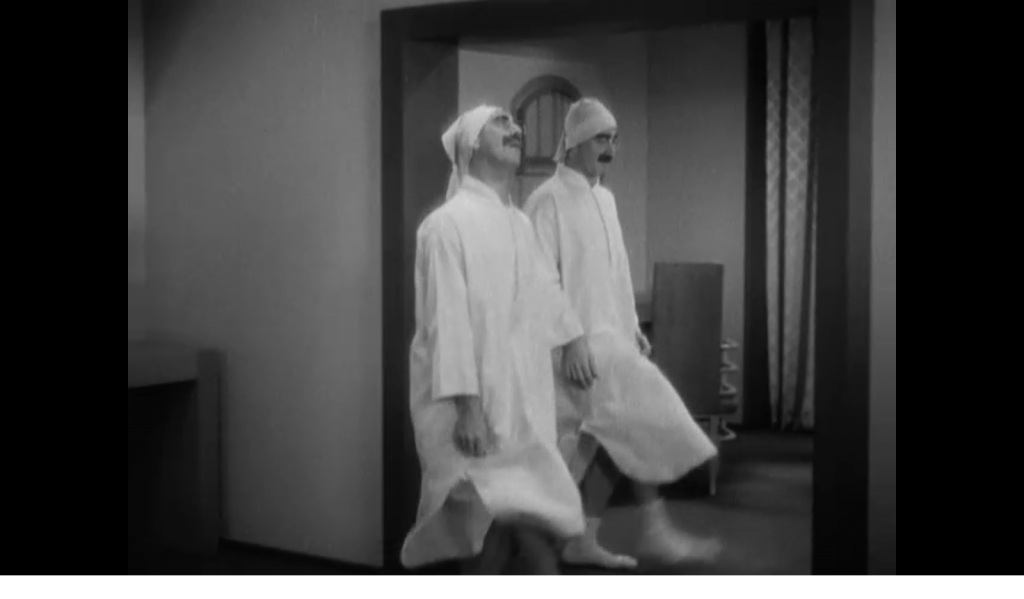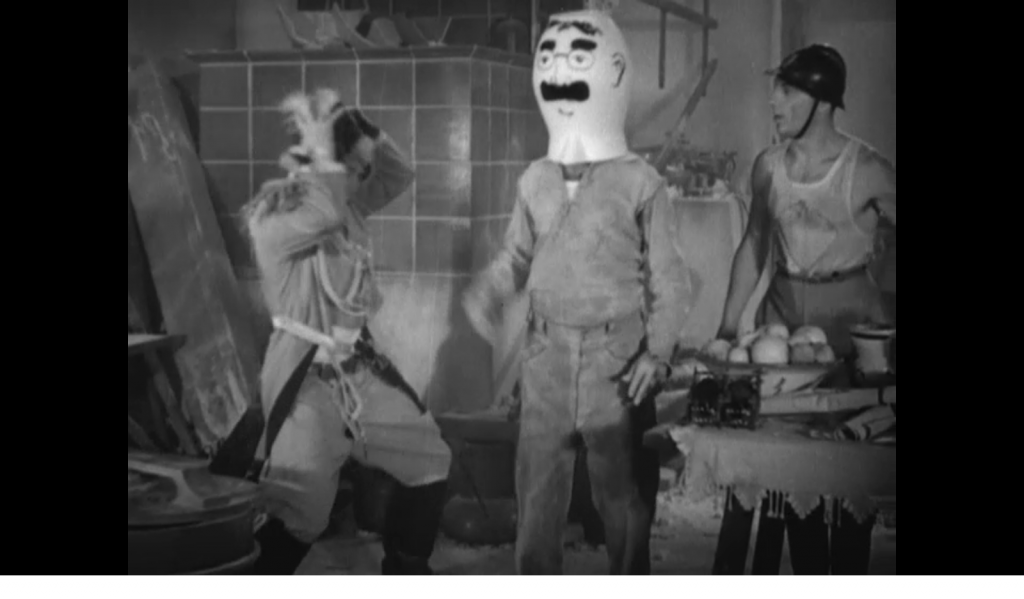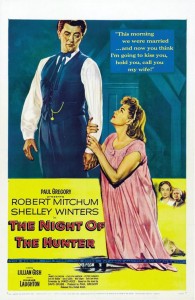|
Genres:
- Charles Laughton Films
- Con-Artists
- Ex-Cons
- Horror Films
- Lillian Gish Films
- Priests and Ministers
- Robert Mitchum Films
- Runaways
- Shelley Winters Films
- Widows and Widowers
Response to Peary’s Review:
On the basis of his sole directorial effort, it’s clear that Charles Laughton was not only a gifted actor but a true genius behind the camera. His Night of the Hunter — based on an award-winning Depression-era novel by Davis Grubb, and “strikingly photographed by [DP] Stanley Cortez” — remains a “fascinating, truly unique work, part gothic horror film, part religious parable, part fairytale” (and, as described in Peary’s review of the film for Alternate Oscars, “part animated-cartoon”). As Peary notes, Robert Mitchum (in perhaps his most memorable role) is “absolutely terrifying as the phony preacher” who “all adults are mesmerized by”, but who the film’s stalwart young protagonist (Chapin) recognizes immediately as a wolf “in sheep’s clothing”.
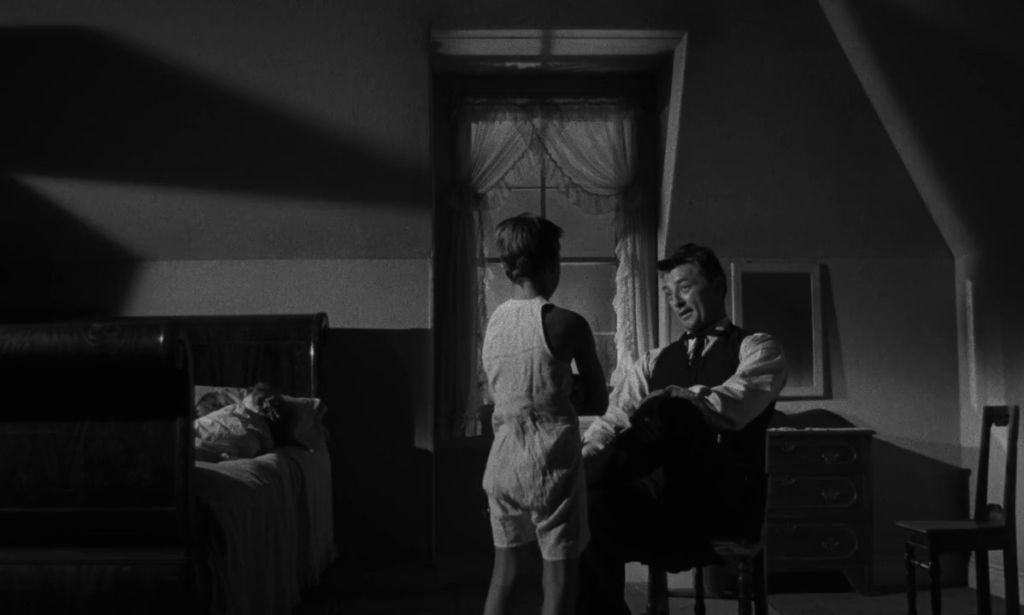
Once Chapin and the doll-like Bruce (that forehead!) go on the lam from the predatory Mitchum, Peary accurately likens them to “Hansel and Gretel, traveling through the woods, heading downstream — only they find a sweet old lady” (Gish) rather than a witch.
In his more extensive review of the film for his Cult Movies 3 book, Peary admits that he gets “all choked up about halfway through [the film], anticipating Rachel [Gish] coming to the aid of the two desperate children”. He notes “how brave, unselfish, and caring she is”, as the only adult in the film who “recognizes their need for help, and the only one who has the inner strength and the faith to help them”. To that end, “strong-willed Gish and strong-bodied Mitchum are great opponents” — what inspired casting on both counts!
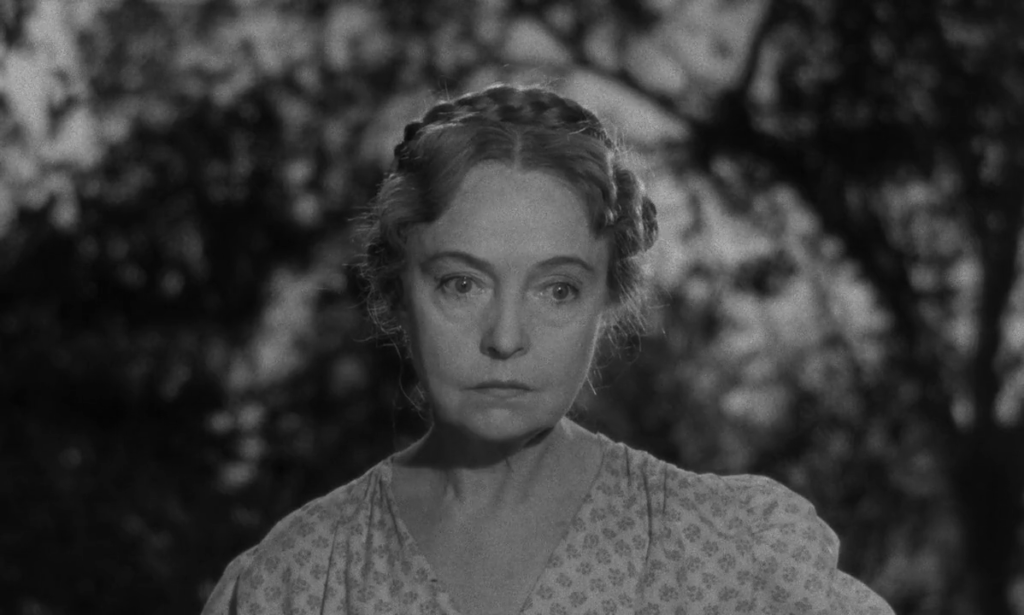
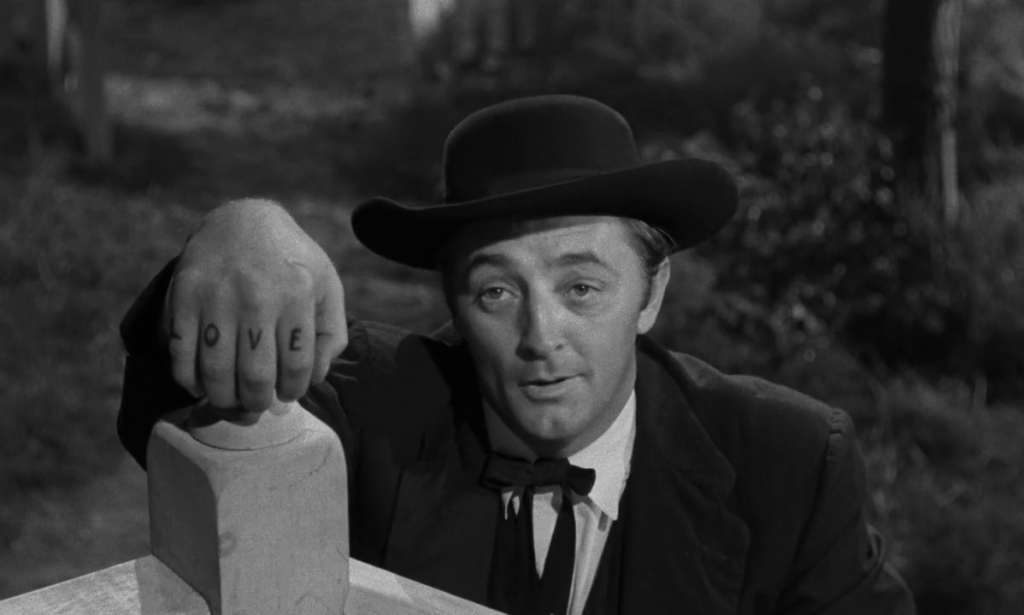
Other performances in the film — from Winters as Mitchum’s doomed new bride, to Evelyn Varden as a nosy, self-righteous neighbor named Icey Spoon (!) — are fine as well; but what’s most striking about the film is Laughton’s utterly “audacious visual style”, turning nearly every frame of the picture into a memorable tableaux (see stills below). As Peary notes, Laughton “borrowed from D.W. Griffith (Gish’s most famous director) and German Expressionists” to create a highly stylized alter-universe which “immediately takes us out of reality”. The film’s enormously creative opening scene, for instance, has “harsh music… replaced by the sweet singing of children and the heads of Rachel and her five young wards appear[ing] in the sky, amidst the stars”, providing just a hint of what’s to come — no ordinary 1950s Hollywood melodrama, this!
(And speaking of the opening shot, it’s intriguing to wonder whether the entire film might be, as Peary suggests, “the nightmare John [Chapin] has… after hearing Rachel’s fretful words”. Hmmm…)
Regardless, we’re taken on a humdinger of a ride — one we can’t ever pull our eyes away from, no matter how frightening the story becomes. This is thanks in large part to the consistently striking beauty of Laughton’s visuals, but also due to how Laughton deftly infuses this most tragic of tales (about murder, theft, deceit, and child abuse!) with plenty of alleviating dark humor. He does this by turning Mitchum’s psychopathic preacher into a “classic deceitful fairy-tale villain”, one who supplies unexpected “slapstick humor” and thus provides the film with its “necessary moments of relief”. Yet for all his cartoonish qualities, Mitchum remains a serious presence to be reckoned with throughout — a truly crazy “messenger of God” who will do anything, absolutely anything, to get that $10,000. Watch and be afraid.
Redeeming Qualities and Moments:
- Robert Mitchum as Harry Powell (nominated by Peary as Best Actor of the Year in his Alternate Oscars)
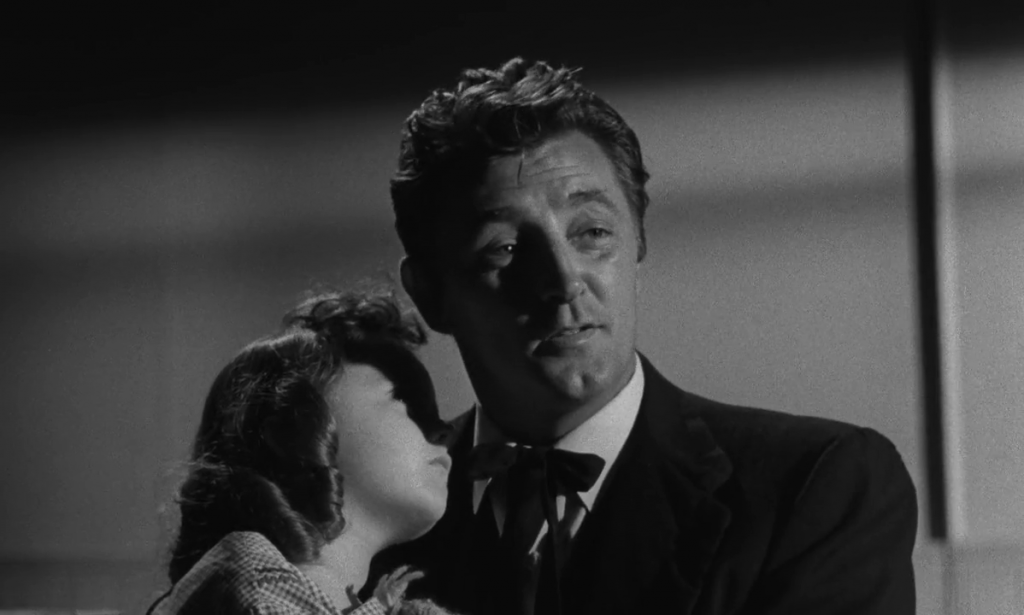
- Shelley Winters as Willa Harper
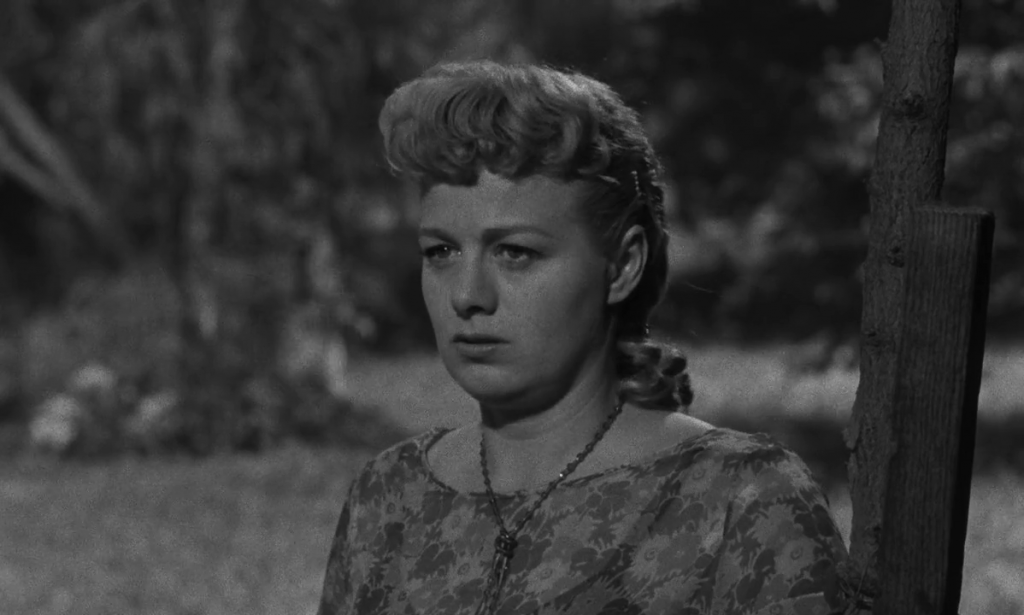
- Lillian Gish as Rachel Cooper
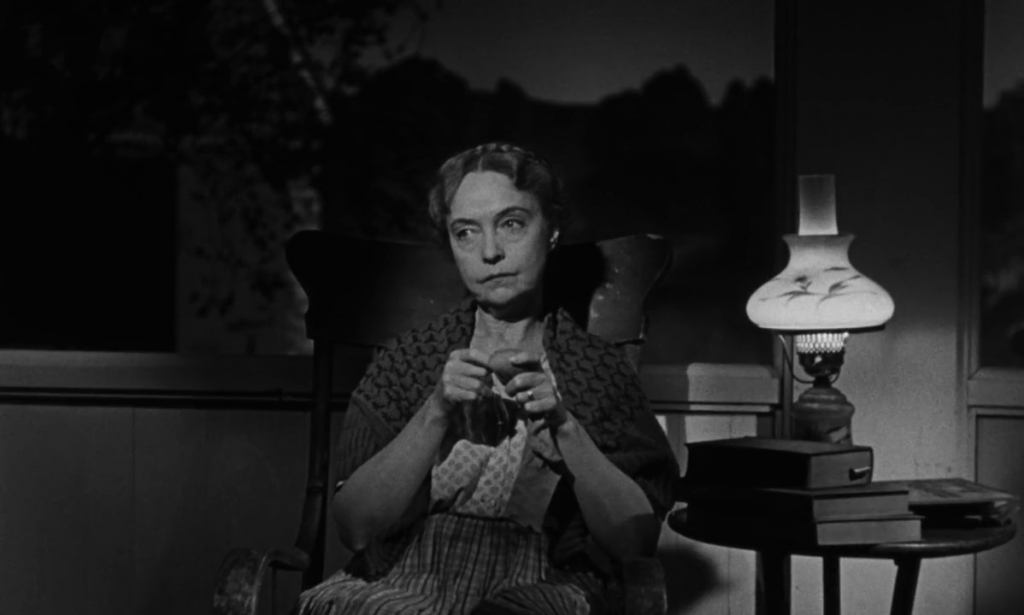
- Evelyn Varden as busybody Icey Spoon
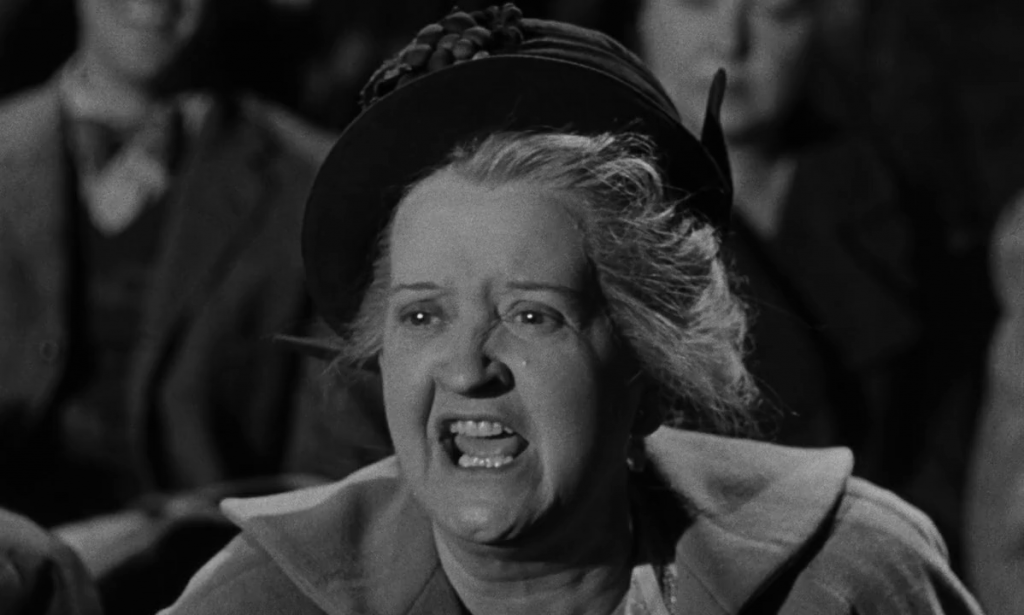
- Masterful, consistently creative direction
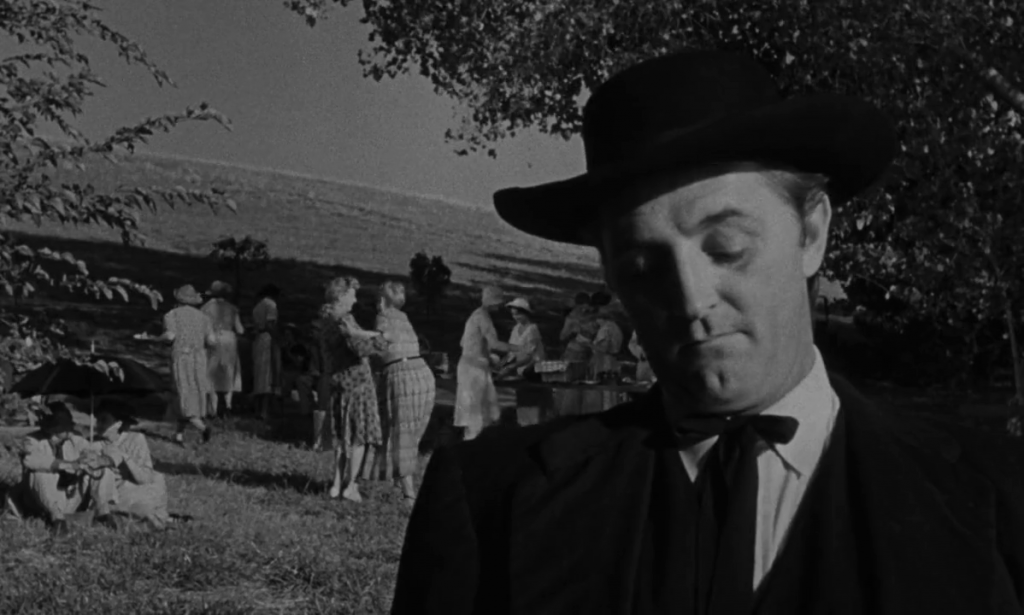

- Stanley Cortez’s stunning cinematography
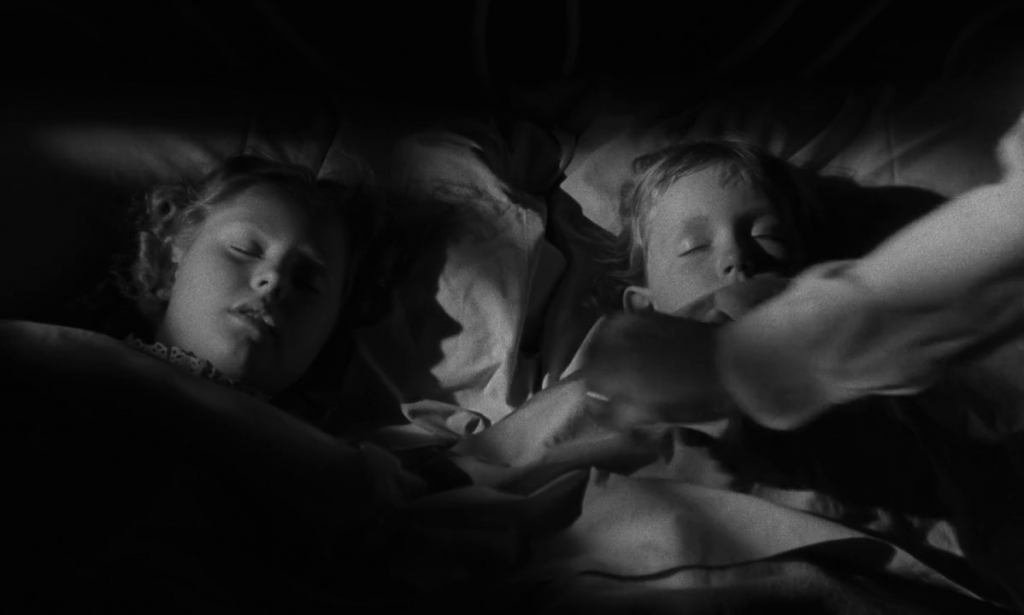
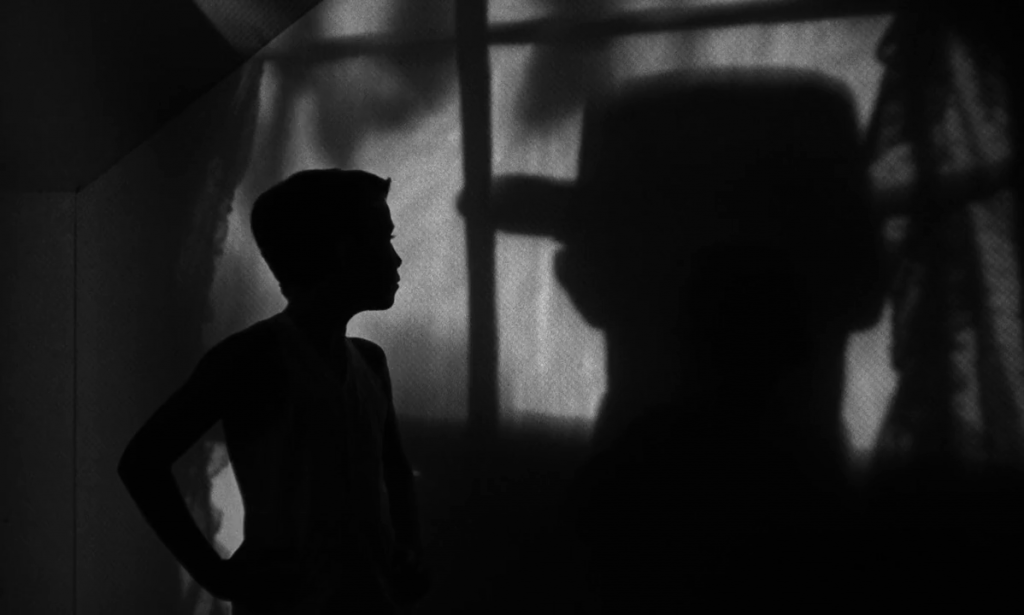
- Countless indelibly haunting images
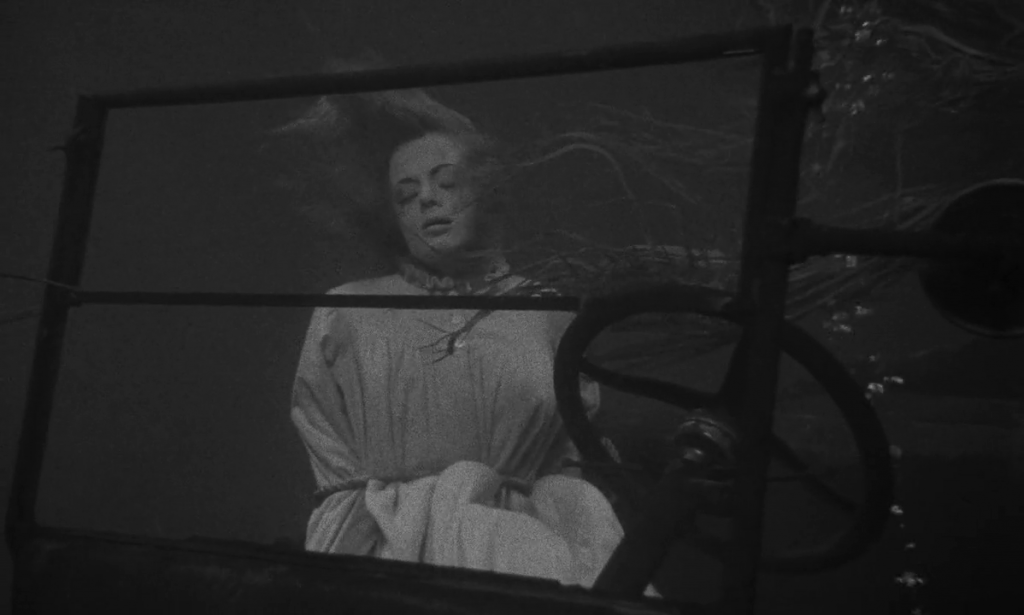
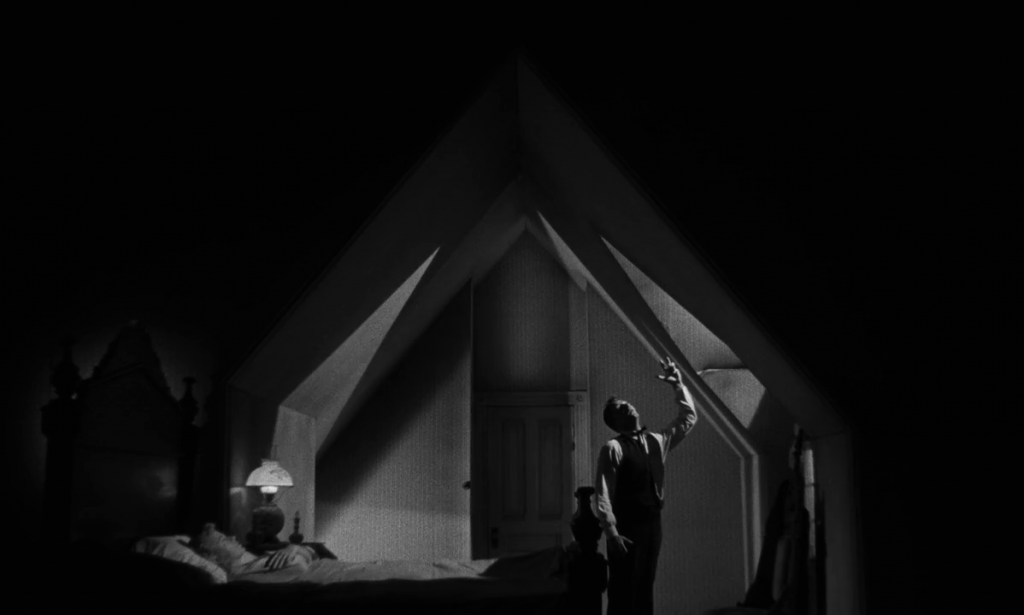
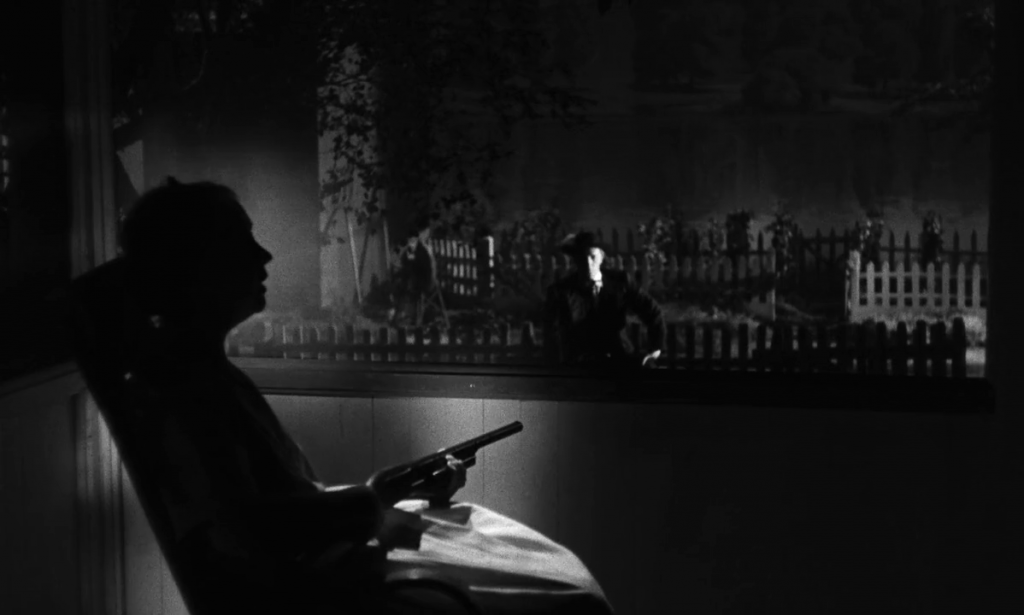
- Walter Schumann’s varied, eclectic score
Must See?
Absolutely. This unique classic remains one of the best examples of mid-century American cinema. Discussed at length in Peary’s Cult Movies 3. Selected as the Best Movie of the Year in Peary’s Alternate Oscars.
Categories
- Genuine Classic
- Noteworthy Performance(s)
(Listed in 1001 Movies You Must See Before You Die)
Links:
|
